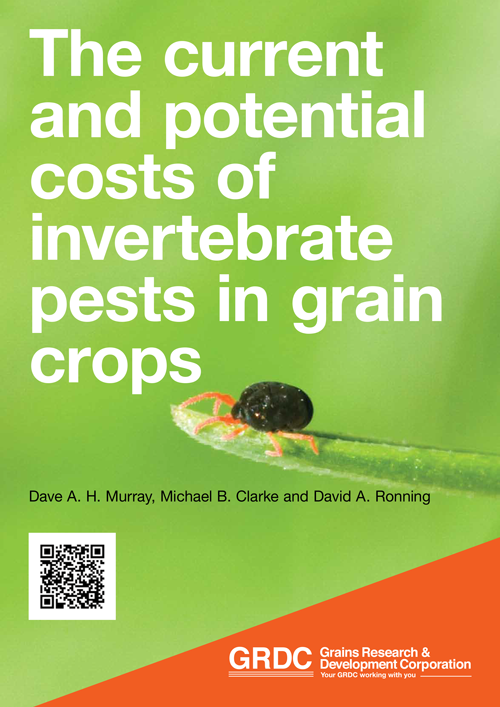The current and potential costs of invertebrate pests in grain crops

The purpose of this study was to estimate the value of current and potential losses from invertebrate pests for the six most important Australian grain crops. Invertebrate pest species were identified using Australian literature and advice from entomologists with experience in grain crops. Current and potential losses from invertebrates were estimated through a survey of entomologists and reported on a GRDC Region basis. Estimates were prepared for wheat, barley, oats, canola, lupins and grain sorghum.
Based on current loss the three most important invertebrate pests of wheat are redlegged earth mite, blue oat mite and locusts. These three species are also the most important invertebrate pests of barley and oats.
The three most important invertebrate pest species of canola are diamondback moth, redlegged earth mite and canola aphids (various species) while for lupins they are aphids (various species), budworms and bryobia / balaustium (various species) mite. The most important invertebrate pests of grain sorghum are budworm (corn earworm), sorghum midge and false wireworms (various species).
Aggregated across the six major Australian grain crops, the estimated present annual loss due to invertebrate pests totalled $359.8 million. The relative importance of invertebrate pests varied between regions. Nationally, the five most important invertebrate pests, based on estimated present losses aggregated across the six crops, were redlegged earth mite ($44.7 million), budworms ($36.3 million), blue oat mite ($35.5 million), lucerne flea ($28.4 million) and locusts ($28.4 million). Present cultural and pesticide controls of invertebrate pests effectively reduced losses by $1,366.1 million, but pest management remained very dependent on pesticides. Nationally, pesticide treatment costs aggregated across all six crops totalled $159.1 million.
Results from this study will inform future GRDC investment decisions related to invertebrate pests.
Author:
Dave A. H. Murray, Michael B. Clarke and David A. Ronning
Published:
February 2013
Download: The current and potential costs of invertebrate pests in grain crops (PDF)
Was this page helpful?
YOUR FEEDBACK
